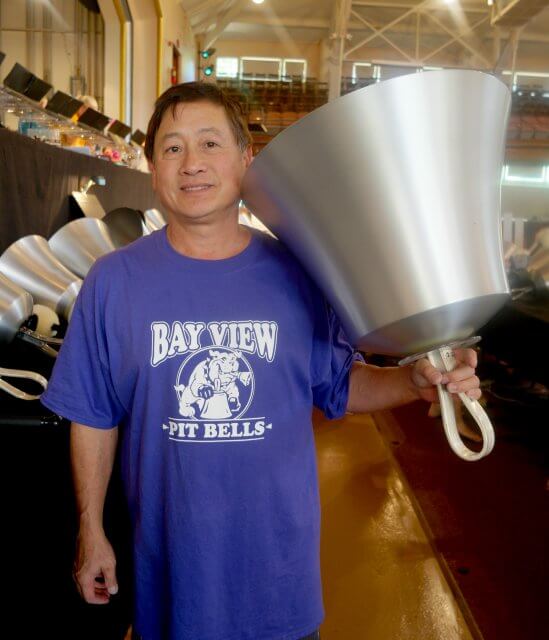
Larry Sue has been a church musician since 1974, when he became the accompanist for his church’s new youth choir. That led to opportunities with guitar, voice (natural-range baritone, but usually tenor, and occasionally bass and alto), keyboards, electric bass, choral conducting, and choral composing.
He began playing to handbells in 1987 at a choral conference, and soon after joined the handbell choir at his church. In his second season with them, the group ended up playing five octaves of bells with ten members, at which point he became a bass ringing specialist with the nominal assignment “CD4, and anything to the left that you can manage”. This rather accelerated education in ringing led to his being a clinician on many aspects of handbells, especially bass ringing technique.
Larry has been a member of Bay Bells, one of the longest-running West Coast community ensembles, and currently is a member of the Kalamazoo Ringers, one of the longest-running bronze-level community ensembles in the United States. He has also participated in Distinctly Bronze West and the Bay View Week of Handbells, being part of the bass ringing team in both events.
Larry has directed handbell ensembles at a number of churches, as well as having been privileged to be a festival conductor at events such as the Rogue Valley Handbell Festival, the Siskiyou Summit Handbell Conference, and the SECC Handbell Festival in southern California. He has also had the privilege of directing bronze-level groups such as the Bronzefest ensemble at HMA Area 8.
In 2005, he and the other Bay Bells bass ringers became Low Ding Zone, the World’s First Bass-Only Handbell Ensemble, serving as the group’s “conceptual founder and Artistic Figurehead”. Over the next eight years, they attempted to create as much havoc in the handbell world as they could, and continue to feel that they did pretty well at it.
Larry has been a published handbell composer since 1990. His arrangements and original works have been in the repertoire of many handbell choirs, as well as being included in the repertoire lists of various events, such as Distinctly Bronze and the Bay View Week of Handbells. He has also been commissioned to write a number works for handbells, including the 2017 Allured Original Composition Award.
Larry and his wife Carla first connected in 2008 as members of the Handbell Community Online; they “graduated” to Facebook shortly thereafter as they embarked on a long-distance relationship between England and California. In 2012, Carla’s handbell trio became a duo, and so Larry started writing eight-bell music for them to play for Queen Elizabeth II’s 60th-anniversary celebration. After Larry and Carla were married later that year, Larry continued writing eight-bell music for them to play together. They now have several hundred scores which form their repertoire as “West Michigan’s Smallest Handbell Choir”.
Larry founded Choraegus in 1995. Its catalog includes works for six accompanied bells, eight bells (unaccompanied and accompanied), twelve bells, sixteen bells, handbell choir, handbell soloist, and various handbell ensembles, as well as nearly one hundred choral/vocal works. In addition, Choraegus sells the Bass Ringer’s Notebook, perhaps one of the most thoroughgoing volumes on the principles and techniques of bass handbell ringing.
Larry and Carla moved to Michigan in 2016. From there, they write and record their handbell music. They are available to perform their duets at concerts, weddings, corporate events, memorial services, church services, and other events in Michigan and beyond, and can also teach classes and workshops in handbell technique.


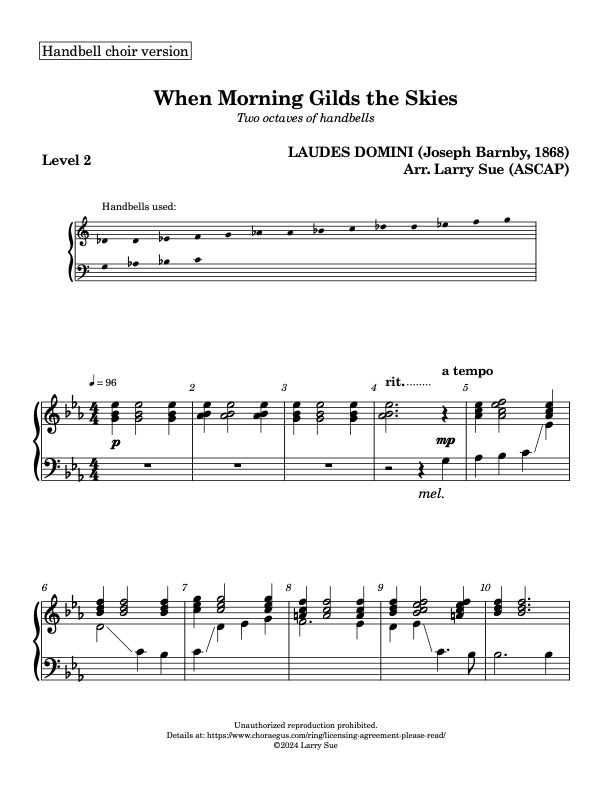
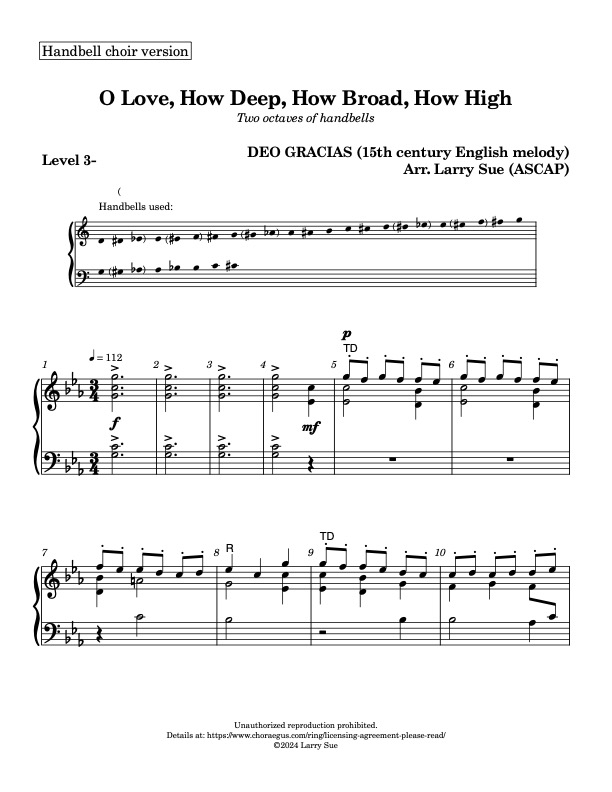
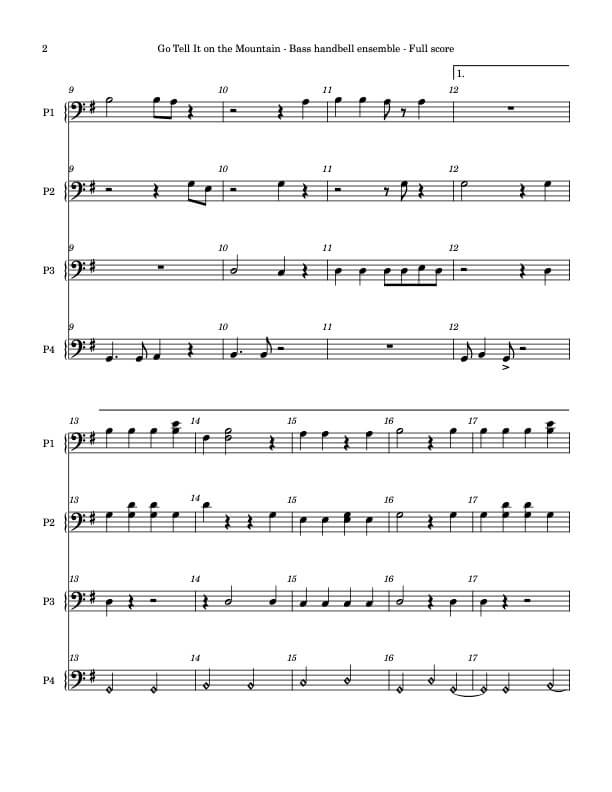
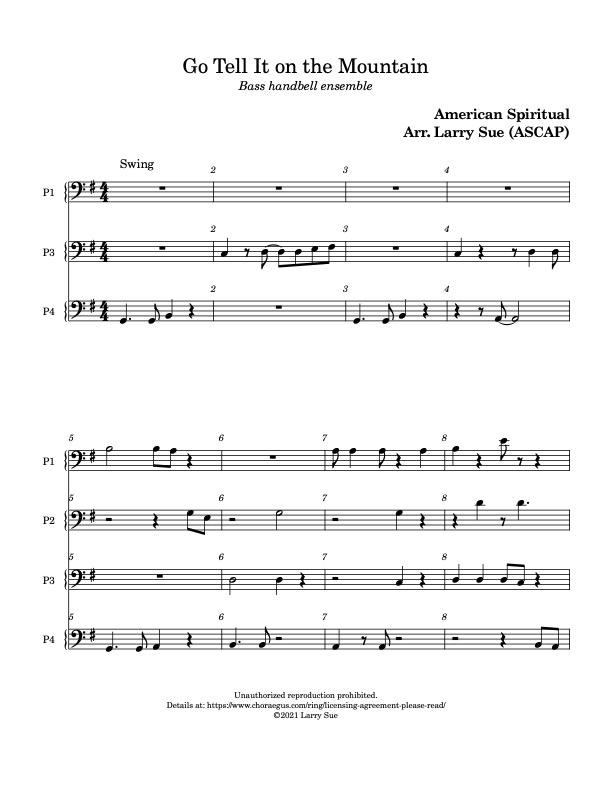
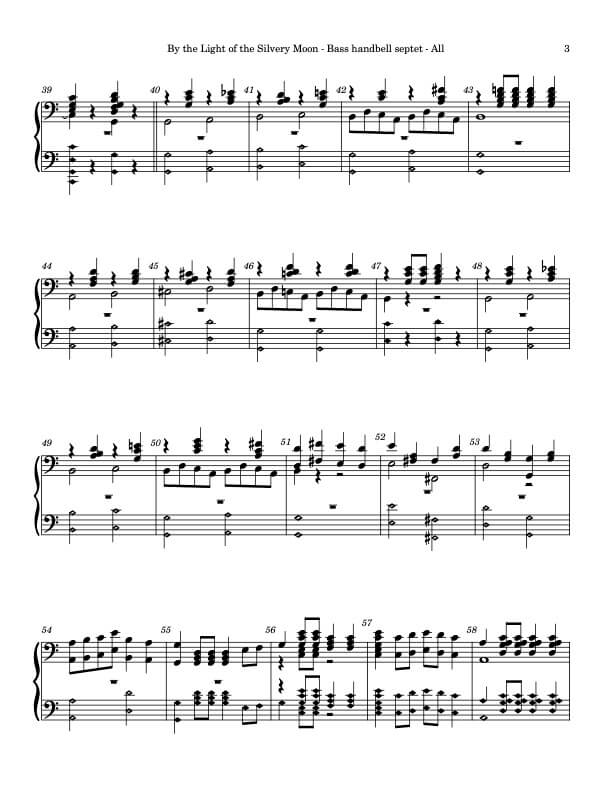


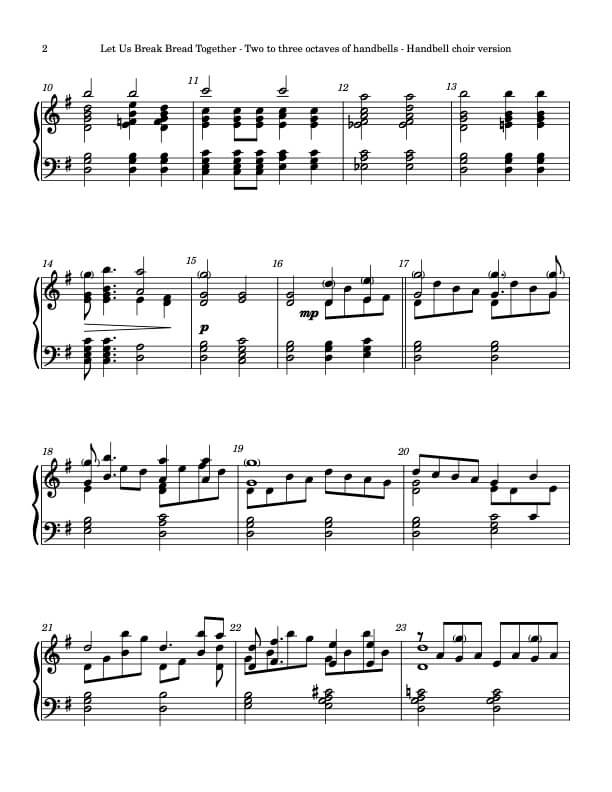
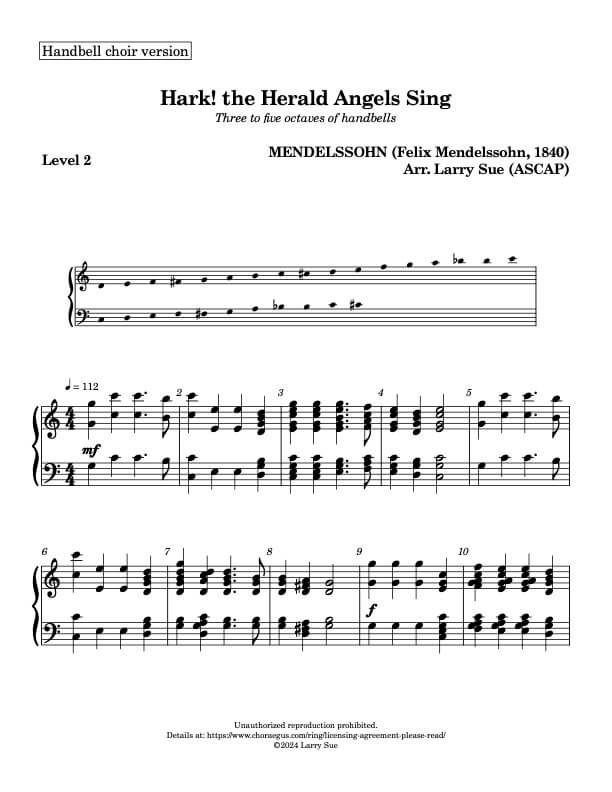
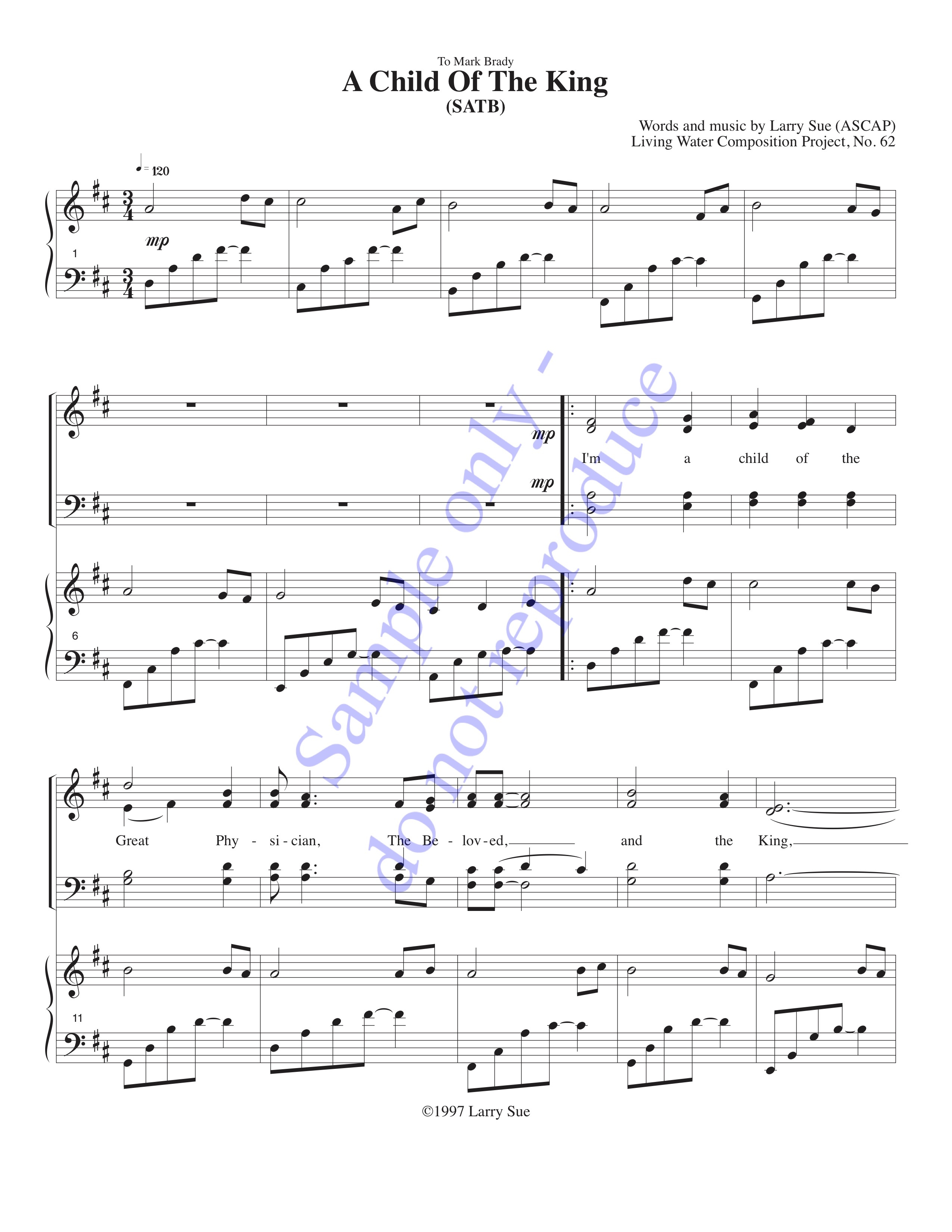
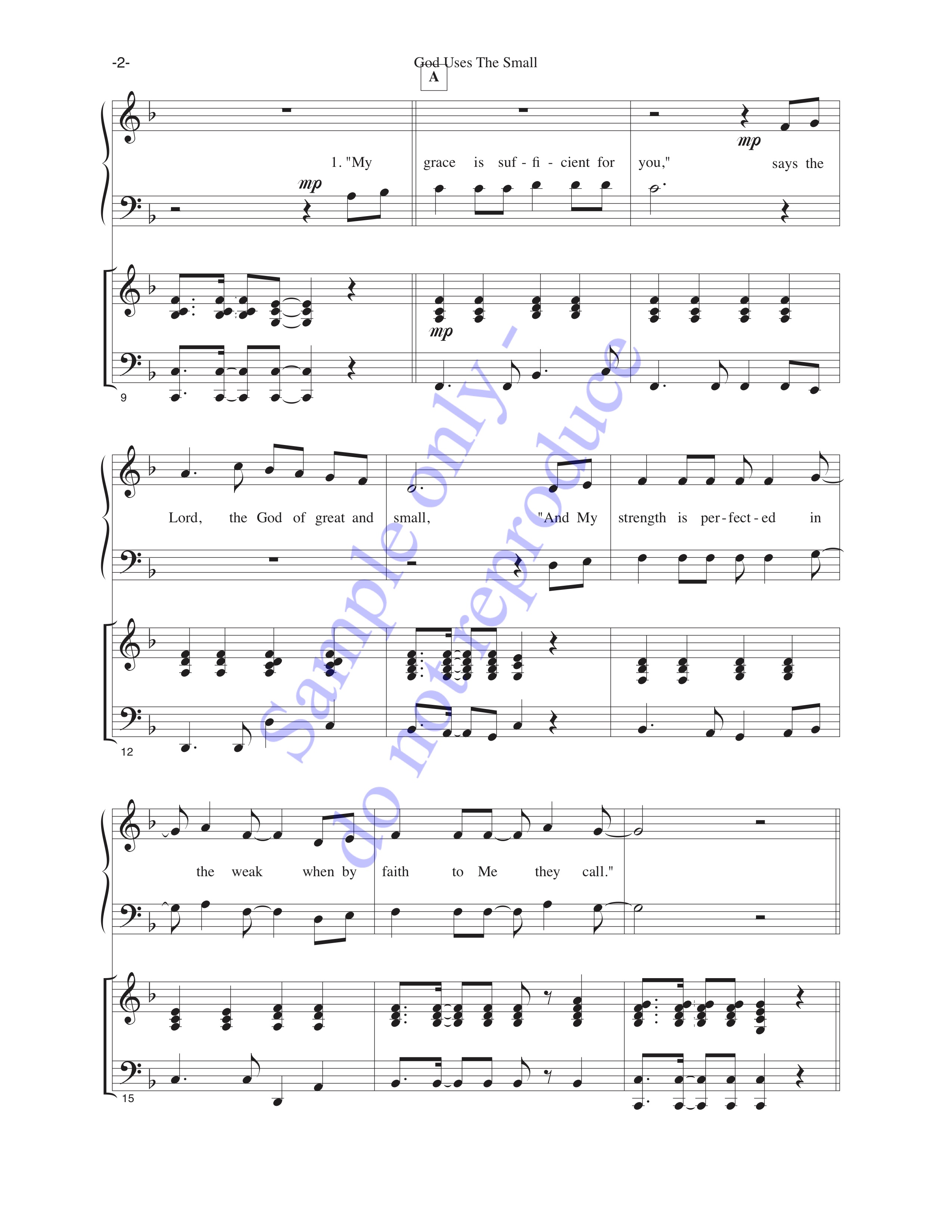



















































































6 comments
Skip to comment form
Larry, I am new to purchasing music through a website and downloading the PDF file. Now that I have downloaded the file, how do I get the music to print on 11×17 paper in the same format as printed purchased music? If I take the file on a flash drive to a print shop would they know what to do?
Thanks for your help.
Nicki Haire
Author
Hi Nicki,
Hmmm… I think, if you had Adobe Acrobat, you might be able to reformat the pages to print in 11×17 paper. I’m pretty sure a print shop would know what to do.
YMMV: I usually just print my scores on 8-1/2×11 and tape the pages together – it makes each internal page twice as thick because it’s made of two pieces of paper, but it works pretty well.
Larry :)…
How can i place order.? No option showing anywhere. Tried 3 times to send this.
Author
Hello,
It’s quite simple:
1. Find each piece of music that you want to buy, and press the “Add to Cart” button to put it into your (electronic) shopping cart.
2. When you’ve put all the music you’d like into your cart, press the “Check out with PayPal” button. You’ll be redirected to PayPal to make your payment.
3. Make your payment via PayPal. If you don’t have a PayPal account, they provide a way to pay using a debit or credit card.
4. Once you’ve made your payment via PayPal, a webpage confirming your purchase will be displayed with a download link for each piece of music you’ve ordered.
5. Click each download link to receive a PDF of each score you’ve purchased.
6. Print your scores and start playing them!
Sincerely,
Larry
Larry, I’ve listened to several 12-bell arrangements for potential use by our quartet. We’ve played some of both your 16-bell and 12-bell arrangements during the past two years. The demos for several of the 12-bell ones had 3 people playing the pieces. Can they readily be adapted to four people playing them, e.g. the lower two players each playing 2 bells, and the upper two playing four-in-hand?
Thanks.
Author
Hi Bob,
You’re welcome to assign the bells in any way you think reasonable! In our twelve-bell “clone” videos (e.g. Children of the Heavenly Father), we use exactly the assignment you’ve described, and for the same reasons.
What matters most is the music, so whatever makes the best presentation possible is what you should do.
Thank you for playing our music!
Happy Ringing,
Larry